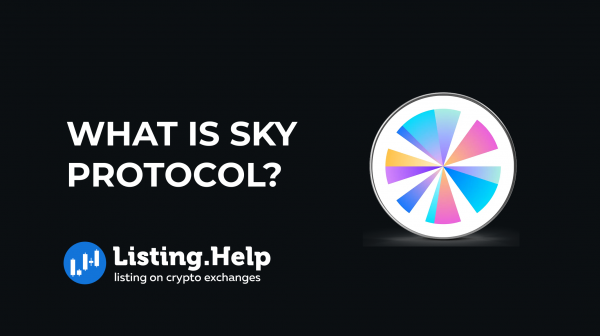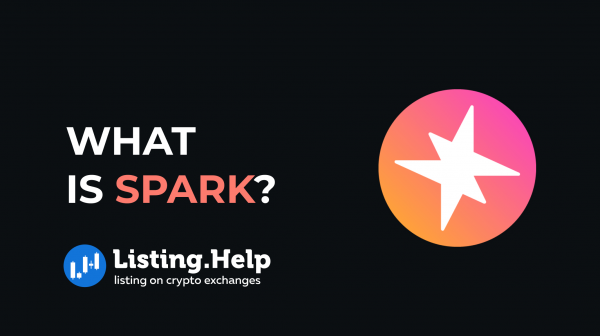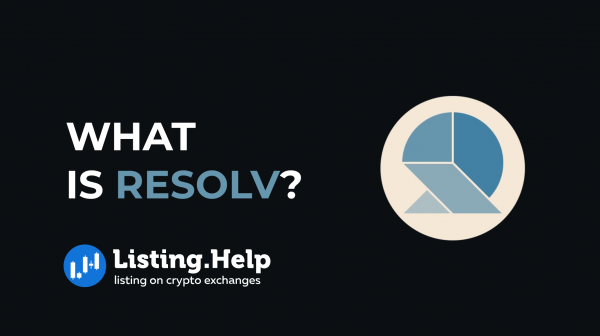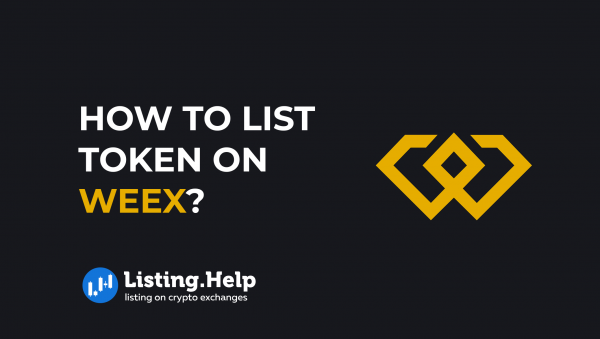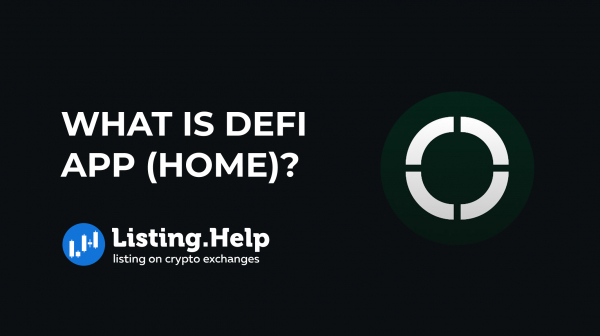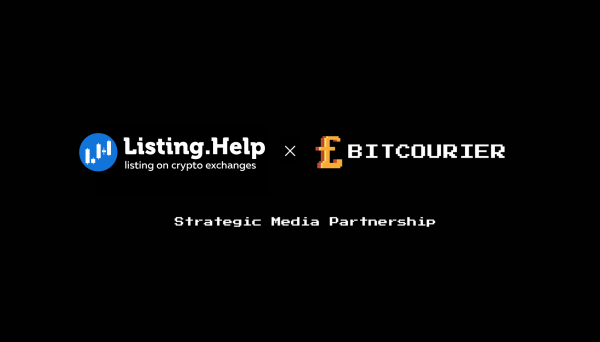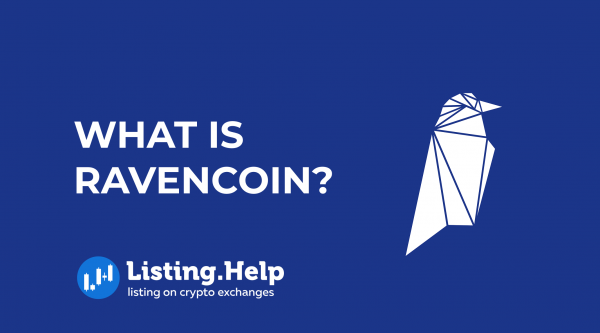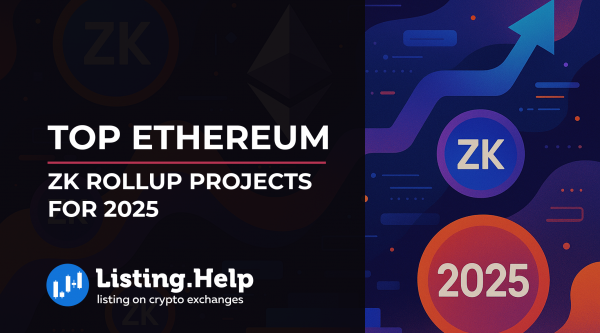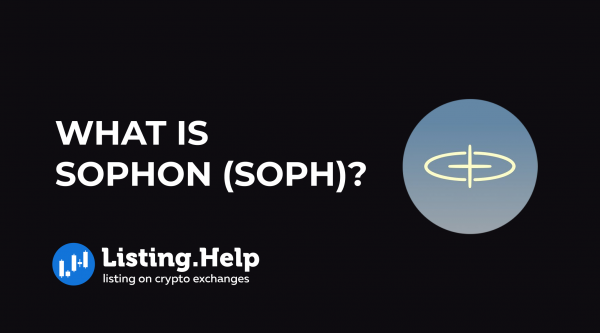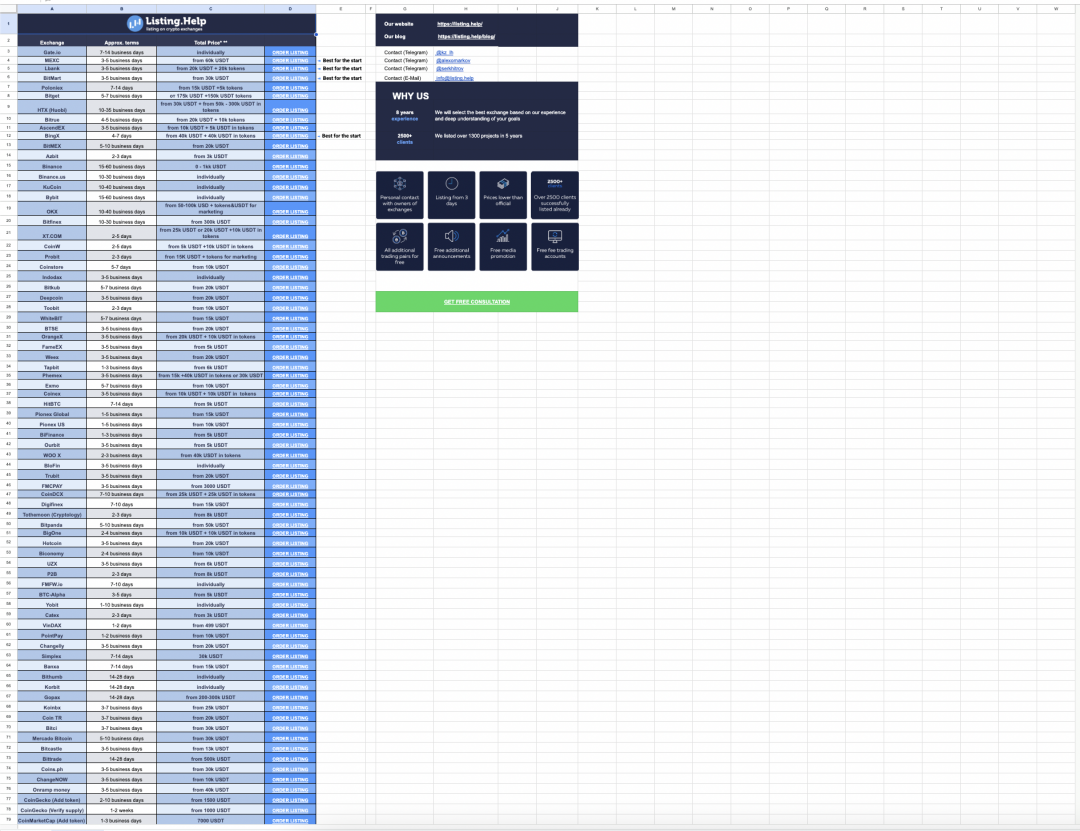How Much Does It Cost to List Coins on an Exchange in 2025?
 January 24, 2024
January 24, 2024 Updated: April 21 2025, 10:01
Updated: April 21 2025, 10:01
LEAVE A REQUEST
Launching your own token project? Our experts are ready to help with listing on exchanges, market making, marketing and other solutions
SUBMIT APPLICATIONGetting your Web3 project listed on an exchange is a smart move for success in the competitive blockchain industry. It boosts visibility, builds investor trust, and opens doors to vital funding. But it does come with a cost. In this article we explain why being listed on crypto exchanges is important, talk about the costs involved, and give smart strategies to handle these expenses. Whether you’re a seasoned enthusiast or just starting out, join us as we simplify exchange listings and provide valuable insights to navigate the financial side of this complex process with confidence.
Why Is Exchange Listings Important?
Claiming a spot on an exchange platform is great for blockchain businesses, as it opens up a gateway to many benefits. Here are compelling reasons:
- Improved Visibility: Getting listed on an exchange gets you noticed (and it’s great if you’re prepared for it). It makes people see you and think, “Hey, these guys are legit!” This will help you gain the trust of users, fans, and investors.
- More Money Opportunities: More people can invest in your project after your token listing. More investors bring in more money, which is really important for your project to grow and do well.
- Easy Buying and Selling: When you’re on an exchange, it’s easy for people to buy and sell your tokens. This makes your project more attractive to investors because they know they can quickly sell their investment.
- Attracting Friends and Users: Being on an exchange is like being in a famous club. It gets you noticed, and others might want to join in. Big players are like the cool kids’ hangout; people might want to work with you just because you’re part of that crowd.
- People Trust You More: Choosing a regulated exchange shows you’re playing by the rules. This makes investors feel safer. Following the rules and ensuring things are secure helps everyone feel more at ease.
Getting on a cryptocurrency exchange isn’t just a thing you do for fun. It’s a clever step that makes your project look good, brings in more money, and helps you succeed in the competitive world of blockchain.
Cryptocurrency Exchange Listing Fees in Detail
CEXs and DEXs serve as virtual platforms where digital currencies are bought and sold. One important thing to know is the fees for adding new coins. Let’s discuss how they are set, why they are important, and how to choose where to keep your tokens.
What Are the Crypto Exchange Listing Fees?
In simple terms, exchange listing fees are the funds required to place an order to get your digital assets listed. Beyond being a mere transaction, these fees serve as an entry ticket into the crypto trading ecosystem, making tokens accessible to a broader audience of investors.
These payments can combine different charges, forming the total cost of putting your coin on a platform. They differ widely among various exchanges, so it’s important to understand them for effective budgeting.
How Do Exchanges Decide the Price to List Coins?
The pricing strategy employed by exchanges is multifaceted and influenced by various factors. First, listing fees depend on your coin’s popularity, what people want, and how promising your project is. Think of it like a judging panel deciding who gets to perform.
Now, about those fees – it’s not a one-size-fits-all deal. Some platforms charge a fixed amount, while others look at your coin’s value or how much it’s being traded.
But here’s the catch: paying the fee doesn’t guarantee your coin a spot on the exchange. There are rules, and your project needs to meet them. It’s like passing a test – your coin needs more than just money; it needs to prove it’s worth it.
Factors Influencing Listing Fees
How much it costs to list a project depends on a couple of key things. Let’s break it down:
- Popularity and Recognition: If other web3 community members, especially investors, really like the project, the listing fee could be lower.
Bitcoin (just imagine that this is your project) might have lowerfees compared to less-known projects. - Market Capitalization: The size of a project, measured by its market value.Projects with bigger Market Cap will pay lower fees as well.
- Technology and Security: Exchanges check if a project has good technology and is secure. If the project is advanced and safe, they might let them pay lower fees.
- Exclusivity: Some exchanges offer exclusive listings as a premium service, charging more for exceptional exposure.
A plarform with exclusive representation in a specific region may charge a premium. - Market Demand: Higher demand for a coin can lead to decreasedlisting fees.
- Project Credibility: Established and credible projects may enjoy lower listing fees.
- Technical Complexity: The complexity of a project’s technical architecture can influence fees.
Complex smart contracts may lead to higher fees. - Community Support: The strength and engagement of a project’s community matter.
Projects with an active user base may get more favorable terms. - Liquidity and Market Potential: The projected impact on trading volume and liquidity is crucial for determining fees.
Projects enhancing an exchange’s market activity may negotiate better terms. - Reputation: The standing of a project in the crypto community is pivotal in fee determination.
In summary, listing fees depend on a project’s popularity, market dynamics, technology, community support, and credibility. Exchanges aim to balance their resources while working with projects that positively contribute to market activity and have a strong standing in the crypto community.
Types of Fees
Understanding the diverse fee structures associated with cryptocurrency listings is crucial for crypto project planning and budgeting. Exchanges typically employ a combination of fixed costsand charges for marketing and promotion to generate revenue and support listed projects.
Fixed Fees
A fixed fee is a one-time payment required for listing on an exchange. This amount remains constant regardless of the project’s value and provides predictability for budgeting purposes. For example, Exchange ABC might charge $50,000 for listing a mid-cap project, while Exchange XYZ may set a fee of $200,000 for similar services.
Fees for Marketing and Promotion
Exchanges consistently offer marketing and promotional support to boost the exposure of recently listed coins. They organize various marketing initiatives, including trading contests, AMA sessions, airdrops, and more. To participate in these events, you are required to allocate a certain number of tokens to the platform, typically amounting to around $10,000. These tokens will then be distributed to the winners of contests.
Market Maker Services
Some exchanges offer market maker services to enhance liquidity for your token. While optional, availing these services might come with an additional cost.
So, listing fees include fixed charges for the listing service and optional marketing and promotional services fees. Projects must carefully evaluate these fees to make informed decisions and effectively manage their budgets throughout the listing process.
Average Cost to List a Cryptocurrency on an Exchange
The amount you will have to pay for listing your project isn’t standardized and applies differently to each project. The costs can vary significantly based on several factors, such as the platform’s reputation, user base, and the features it offers. Let’s take a closer look at what you might expect in terms of expenses.
Popular Exchanges
As we now understand the general costs associated with listing, it’s time to explore some of the top exchange platforms that crypto enthusiasts aspire to be listed on. Let’s break down what it takes to get listed, and the fees involved.
| Exchange Tiers | Top 15 on CoinMarketCap | Top 50 on CoinMarketCap |
| Examples | Binance, Coinbase, Kraken, KuCoin | MEXC, BingX, LBank, BitMart |
| Requirements | – Innovative idea or tech – Lots of people supporting it – Transparent team and docs – Legal opinion – Joined cool accelerators or hackathons – Big-name funds put money in | – Community requirement – Founder transparency – Optional accelerator or fund investment |
| Fee Range | Up to 300K USDT | 10K–90K USDT |
Small-Volume Exchanges
While the major exchanges grab the spotlight, there’s a niche market for small-volume exchanges that cater to specific audiences. Discover what it costs to get listed.
| Exchange Tier | Beyond Top 50 CEXs on CoinMarketCap |
| Examples | Various smaller exchanges |
| Requirements | – Listing fee payment |
| Fee Range | 4K–20K USDT |
| Additional Payment Options | N/A |
How to List Your Cryptocurrency on Exchange for Free?
Yes, you read that right – it’s possible to list your currency for free. While listing on exchanges often involves costs, there are ways to apply discounts to minimize or eliminate them. Here are some strategies:
Meet Specific Requirements
Before anything else, check what the exchange requires. Ensure your project has a solid whitepaper, an active community, and a working blockchain. Some exchanges waive fees if your coin meets certain criteria, so do your research.
Partnerships and Marketing Programs
Team up with other projects and influencers in the crypto world. Some exchanges offer free listings if you help them with promotions. It’s a win-win!
Community Voting Competition
Many exchanges let their users decide which coins to list through voting competitions. Get your community involved on social media and forums. The more votes you get, the more your chances of a free listing improve.
Tips for Choosing an Exchange
When picking an exchange, consider these tips:
- Reputation and Security: Choose a secure exchange with a good track record.
- Target Audience: Pick an exchange that fits your users and project goals.
- Listing Requirements: Check and meet the exchange’s listing criteria.
- Liquidity: Choose an exchange with enough trading activity.
- Community Engagement: Go for an exchange with an active user base.
Additionally, stay informed about regulatory compliance and costs associated with the exchange to make an informed decision.
Conclusion
In simple terms, if you want your project to do well in the blockchain industry in 2025, it’s essential to get it listed on an exchange. Navigating the world of related fees may seem daunting, but you can make informed decisions with the correct information. Whether you’re willing to invest in a high-profile exchange or explore budget-friendly options, understanding the costs involved is the first step toward a successful listing. Don’t forget, there are services like Listing.Help that assist projects in their listing process, making the journey smoother. Happy listing!




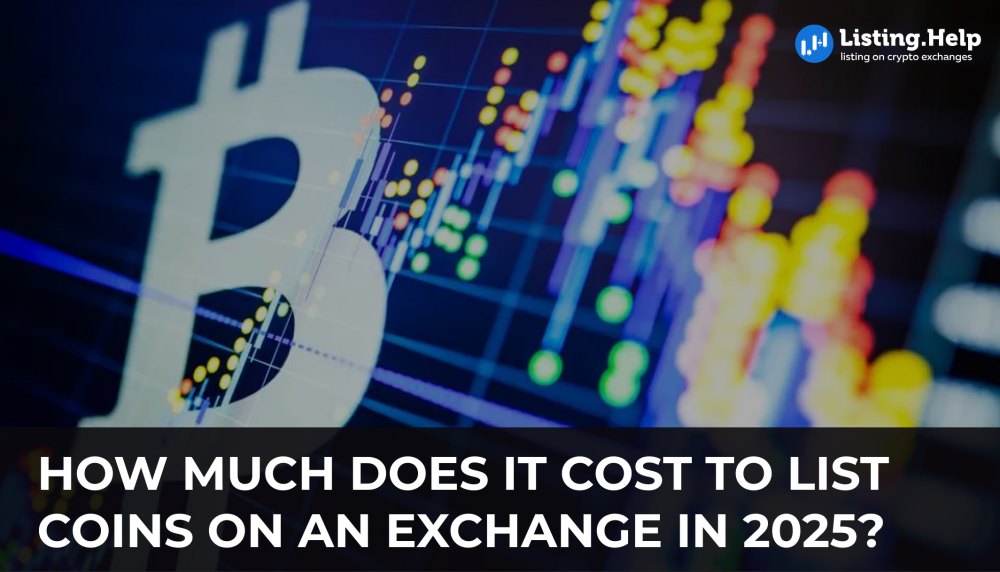

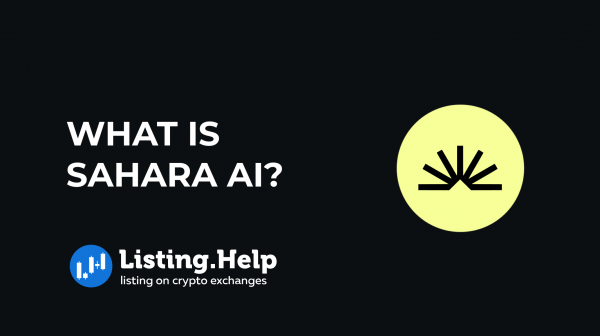
 July 2, 2025
July 2, 2025 